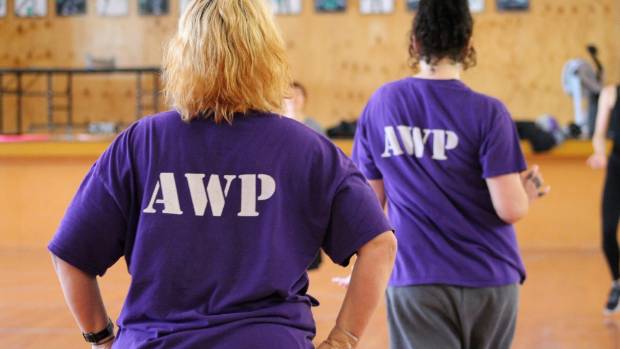In September 2012, only 511 women were behind bars. Five years later, in September 2017, 800 women were in jail – either on remand or sentenced prisoners. This means the female prison population is rising nearly three times as fast as the male population. Department of Corrections chief executive Ray Smith said the rising female population was a “huge problem”.

According to Corrections, there is a growing proportion of female prisoners affiliated with gangs, but the problem is exacerbated by drug addiction, especially methamphetamine.
Police Commissioner Mike Bush was unable to explain the rise of criminal offending among women but suggested that social media might be to blame. He said there had been a recent surge in female offenders taking part in burglaries and police car chases. Some of these crimes were soon posted, or talked about, on social media. Bush said:
“My concern is that some of these crimes are driven out of wanting a few minutes of fame.”Â
What a naive, uninformed analysis that is! Corrections Minister, Kelvin Davis, has more insight. He says:
“Men normally do things because we’re a bit stupid. Women normally commit crime to protect others, their families, their children.”
Davis is right. The numbers are going up. But the reality is that only 20% of all recorded crime is committed by women. Men offend at five times that rate. The percentage of violent crime committed by women is less than 5%.
Research on female offending
Another factor is that judges are getting tougher on female offenders. In Are We Really Colour blind: The Normalisation of Mass Female Incarceration, Adele Norris (2017) analyses female incarceration in New Zealand and the United States. In regard to New Zealand, she concludes that when looking at the growing numbers of women in prison, the fact that most of them are Maori is largely ignored (ie the figures are colourblind.) She notes that:
“In 2012, Maori women represented 58% of all female prisoners compared with 36% for European women, when individuals of European descent represent roughly 70% of New Zealand’s population… over-representation based on ethnicity is amplified with reports stating that Maori women may be ten times more likely to receive a custodial sentence than European women.â€
The point is that Maori – both male and female – are imprisoned at much higher rates than pakeha. So to understand why more women are being sent to prison, we need understand why so many Maori are incarcerated. This is covered in detail here.
In summary, it stems from New Zealand’s colonial past. There is no doubt that over the last 170 years, the takeover of Maori land by the settlers and the gradual imposition of British law, justice and penal systems slowly pushed Maori to the bottom of the socio-economic ladder. The introduction of neoliberal policies in the 1980s increased economic disparity forcing Maori – and everyone else near the bottom rung – down even further. For the homeless and the mentally ill, it pushed them off the ladder altogether – often into prison. International research shows that countries which have introduced neoliberal economic policies tend to have more punitive penal policies and put more people in prison.
Mental health issues
Department of Corrections data reveals some disturbing common factors shared by many women behind bars. More than two-thirds of them – 68% – have been the victim of family violence. The proportion who have suffered family violence, rape or sexual assault, or a combination of these, is closer to 75%.
Three quarters of women in prison have diagnosed mental health problems (compared with 61% of men) and 52% suffer from post-traumatic stress disorder (compared with 22% of men). These statistics suggest that the factors which drive female offending are far more complicated than a sudden need to appear on social media.
So any attempt to explain the increase in female prisoners needs to highlight that the vast majority are Maori – and that historically Maori have been pushed to the bottom of the socio-economic pecking order where they are also more likely to develop mental health problems – and are also punished more harshly than pakeha.
“The authors conclude that the implementation of stricter penalties linked to harsher crime policies explains the sharp increase of female imprisonment, overall, rather than actual criminal behavior.”
